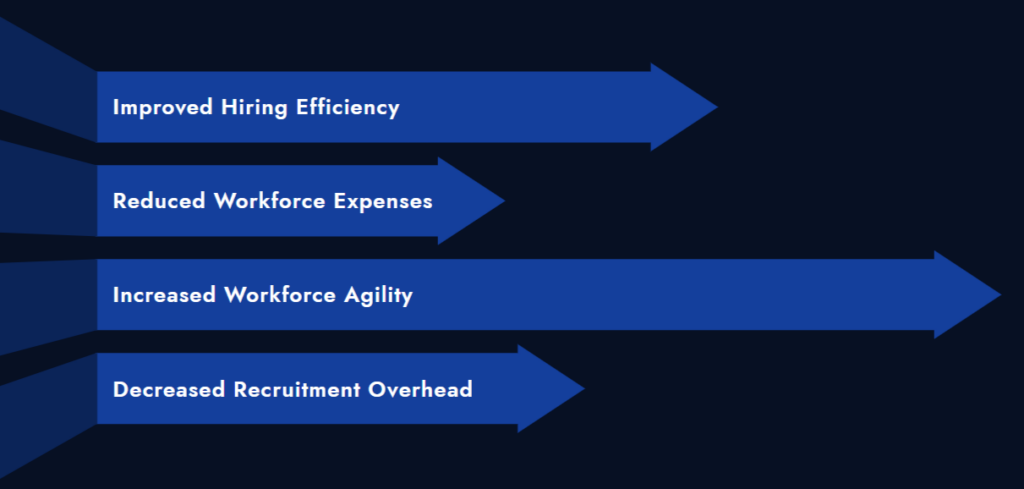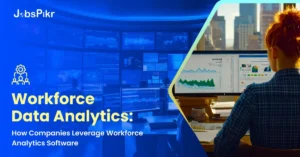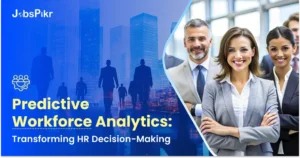In today’s fast-paced business environment, organizations must be agile and responsive to shifting market demands. A key factor in achieving this agility is workforce planning and analytics, which enables businesses to make data-driven decisions about talent allocation, recruitment, and long-term workforce strategies. As companies strive for efficiency and adaptability, workforce planning software has become an essential tool for streamlining HR operations and improving talent management.
A McKinsey study revealed that companies that use workforce planning analytics saw their operational efficiency increase by 25% and talent allocation improve by 30%. With well defined human resource planning procedures, organizations are able to make the most out of their HR resources, while cutting down costs associated with hiring and maximizing productivity.
The focus of this piece is on the importance of workforce planning and analytics, the specific functions of a workforce planning software and how organizations can take advantage of workforce management analysis for building a responsive workforce.

What Is Workforce Planning and Analytics? Why It Matters?
A business’s workforce planning and analytics deals with evaluating workforce needs, estimating future hiring requirements, and optimizing the distribution of labor resources according to the company’s objectives. The appropriate number of people with the required skills must be available when needed. Especially relevant to this outcome is workforce data analysis.

The key features of workforce planning include:
- Workforce Demand Forecasting: Estimating future talent needs due to the business expansion and other market trends.
- Skill Gap Analysis: Recognizing the lack of required skills and training needs.
- Talent Allocation Optimization: Ensuring the right employees are placed in roles that maximize productivity.
- Recruitment Strategy Development: Organizing hiring campaigns responding to the current labor market.
According to a report by Deloitte, organizations that make use of workforce analytics reported 40% improvement in their hiring efficiency and 35% decrease in workforce-associated expenses.
Why is Workforce Planning Software Essential for HR & Talent Recruitment?
As businesses attempt to manage more complex talent requirements, workforce planning software is critical for enhancing HR and recruitment activities. These tools allow organizations to automate the analysis of workforce data, optimize the number of employees needed, and improve overall decision-making.

Advantages of Workforce Planning Software for Businesses
- Access to Real-Time Workforce Insights
Workforce planning software enables visibility into workforce metrics, meaning HR departments can track hiring gaps and workforce surpluses in real-time. - Data-Driven Recruitment Optimization
Workforce planning software in conjunction with recruitment analytics permits HR staff to make informed hiring decisions and decreases the time-to-hire by 30%. - More Efficient Budget Allocations
These tools assist companies in achieving alignment with the organizational objectives in regard to labor spending which cuts wasteful spending on labor by 20-25%. - Tactical Workforce Planning
AI-powered workforce planning enables companies to predict their staffing needs, monitor employee productivity, and develop a talent pipeline strategy.
Organizations that utilize these workforce planning software reported being more agile, 50%, as well as lessening the overhead expenditure of recruitment by 35%.
How Data-Driven Workforce Planning Enhances Talent Distribution & Cost Control?
Planning does not revolve solely on filling vacancies—it also involves optimizing human capital alongside business objectives and cost value. Data-driven workforce planning allows HR leaders to forecast hiring demand, manage staffing levels, and budget appropriately. By harnessing workforce analytics, an organization can track employee productivity, estimate future employment needs, and cut down superfluous costs. This has the effect of increasing organizational productivity while limiting the financial risks associated with underemployment or overstaffing.
Achieving Alignment Between Workforce Planning and Business Objectives
Companies that embed workforce management analysis into their HR policies can achieve better alignment between workforce spending and organizational objectives. In this way, resources are not only wasted, but budgeted carefully while skill gaps get filled.
Key benefits include:
- Optimized Employee Utilization: Through data, HR can ensure employees are placed at positions where they will be able to maximize value.
- Enhanced Employee Retention: Workforce analytics reveals what makes employees satisfied and helps retain them through proactive measures.
- Predictive Hiring Models: AI enabled workforce planning makes it possible for organizations to predict hiring requirements with a lead time of 12-18 months.
Optimization of the Workforce Budget on Human Resources
One of the top challenges for human resources departments is the management of workforce costs and productivity. Data driven workforce planning enables organizations to:
- Identifying Cost-Effective Hiring Strategies: Minimizing reliance on exorbitantly expensive, last-minute recruitment.
- Improving Compensation Planning: Containing total wage bill within budgetary limits while maintaining a competitive salary structure.
- Forecasting Labor Market Trends: Shifting the investment of effort in workforce planning in relation to the movements in the available labor market.
Data enabled analysis saves on average 20% of labor costs, while productivity of the workforce increases by 15-20% as stated in a PwC report.

How JobsPikr Empowers HR Leaders with Workforce Data Insights?
HR leaders experience increased pressure to make tactical workforce decisions that blend business goals and market requirements. JobsPikr’s workforce intelligence solution offers professionals in HR real-time insights from data that help to improve the planning of labor resources, acquisition of skills, and recruitment activities. In conjunction with labor market trends, JobsPikr employs predictive analytics and industry benchmarks to assist businesses in making effective hiring and allocation of workforce decisions. With real-time access to workforce data, companies are able to adjust hiring plans, improve retention, and lower recruitment expenses, thus ensuring a more agile and competitive workforce.
How JobsPikr’s Workforce Intelligence Transforms HR Decisions?
JobsPikr provides real-time workforce data to businesses, meaning that HR leaders can make data-based decisions concerning recruitment and workforce management. With JobsPikr, organizations can:
- Track labor market trends to adjust workforce planning strategies.
- Analyze hiring demand across industries and regions.
- Benchmark salary expectations to remain competitive.
- Improve workforce allocation using predictive analytics.
Practical Examples of JobsPikr’s Workforce Data in Action
- Technology Sector: A global IT firm leveraged JobsPikr’s workforce analytics to predict when certain talents would be in short supply. This allowed them to reduce their time to hire by 40 percent and optimize their staffing levels.
- Healthcare Sector: A hospital system network took advantage of JobsPikr’s staff intelligence by spotting vital staffing shortages which lessened the interruptions in patient care and enhanced the scheduling of the staff.
- Retail Industry: A global retailer took advantage of JobsPikr’s staff information to improve the recruitment for seasonal employees, cutting down hiring costs by 25 percent.
- Manufacturing Sector: A manufacturing company incorporated the labor market intelligence from JobsPikr into their HR strategic business planning, resulting in a 30 percent reduction of operational costs associated with staffing the business.
The Future of Workforce Planning and Analytics
The future of workforce planning is increasingly data-driven, with businesses integrating AI, automation, and real-time labor market intelligence into their HR strategies. Key trends shaping the future include:
- AI-Powered Workforce Forecasting: Companies will increasingly rely on AI to predict hiring trends and talent needs.
- Greater Workforce Agility: Businesses will shift toward on-demand workforce models, balancing permanent and contract staff based on real-time analytics.
- Real-Time Labor Market Data Integration: Organizations will use external workforce analytics tools to monitor global employment trends.
- Data-Driven Diversity and Inclusion Initiatives: HR teams will leverage analytics to create equitable workforce planning strategies.
A study by SHRM predicts that 70% of businesses will use AI-powered workforce analytics by 2025 to enhance workforce management and optimize hiring decisions.
Conclusion
Workforce planning and analytics have become essential for businesses aiming to build an agile workforce that can adapt to evolving market demands. With real-time workforce insights, companies can enhance talent allocation, streamline recruitment, and optimize workforce spending.
Organizations investing in workforce planning software gain a competitive advantage by improving HR efficiency, reducing hiring costs, and aligning workforce strategies with business goals. By integrating workforce analytics into their planning, businesses can make data-driven HR decisions, improving long-term workforce stability and agility.
For HR leaders looking to stay ahead in talent management, JobsPikr’s workforce intelligence solutions provide the data-driven insights needed to make informed hiring decisions and optimize workforce planning strategies.Sign up on JobsPikr today to access real-time workforce analytics and transform the way you manage your workforce!



